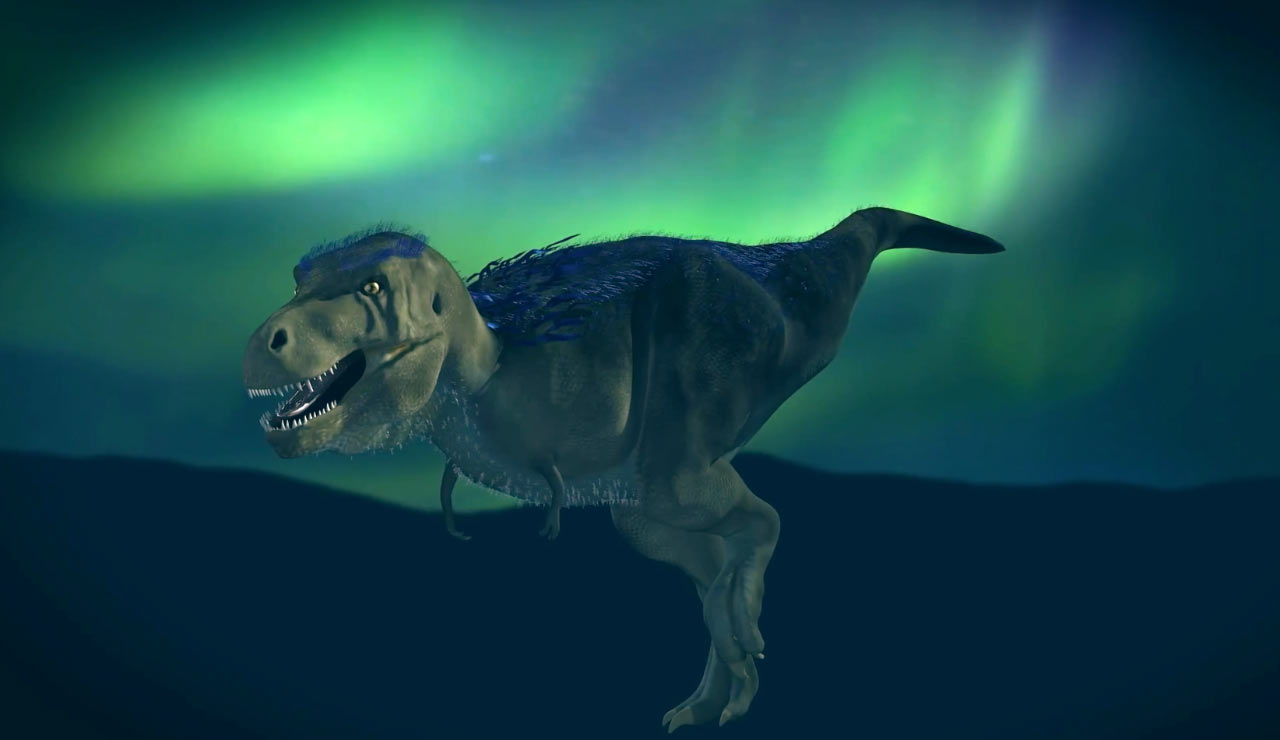
Nanuqsaurus Dinosaur was discovered and named in 2014. Its name "Nanuqsaurus" comes from the Iñupiaq word "Nanuq," which means "polar bear," as the fossils were found in northern Alaska, an area known for its Arctic climate.
The discovery of Nanuqsaurus was significant because it provided insights into the diversity and distribution of tyrannosaurs during the Late Cretaceous period. Nanuqsaurus was estimated to have lived around 70 million years ago, during the Campanian stage of the Late Cretaceous.
| Name: | Nanuqsaurus dinosaurs |
| Size: | Around 20 feet (6 meters). |
| Main Facts: | Nanuqsaurus hoglundi, the hypothetical pygmy tyrannosaur, was a small carnivorous dinosaur from the Late Cretaceous period, measuring about 20 feet in length, and closely related to Tyrannosaurus rex. |
The fossils of Nanuqsaurus were found in the Prince Creek Formation in Alaska. These fossils consisted of parts of the skull, lower jaw, and other skeletal elements. Based on these remains, scientists estimated that Nanuqsaurus was about half the size of its famous relative, Tyrannosaurus rex.
There is no known dinosaur species called Nanuqsaurus .The term Nanuqsaurus was associated with a hypothetical dinosaur species called Nanuqsaurus hoglundi which is referred to as the pygmy tyrannosaur.However, this species was not officially recognized as a valid dinosaur by the scientific community. Extinction is a natural process that has occurred throughout Earth's history, affecting various plant and animal species, including dinosaurs. The most well-known mass extinction event that led to the disappearance of non-avian dinosaurs occurred around 66 million years ago at the end of the Cretaceous period. This event is known as the Cretaceous-Paleogene (K-Pg) extinction event.
During the K-Pg extinction event, it is believed that a combination of factors contributed to the demise of many dinosaur species, along with numerous other plants and animals. The leading hypothesis suggests that a massive asteroid impact, possibly from the Chicxulub impact crater in present-day Mexico, played a significant role in triggering this event. The impact would have generated a vast amount of energy, leading to widespread fires, tsunamis, and a "nuclear winter" effect, causing a rapid and severe decline in global temperatures.
The aftermath of the asteroid impact resulted in an environmental catastrophe. The sudden drop in temperatures and reduced sunlight significantly disrupted ecosystems worldwide, leading to a collapse of food chains and widespread extinction. Plants, as the base of the food chain, suffered greatly, leading to the loss of herbivorous dinosaurs' food sources. Consequently, carnivorous dinosaurs, including large theropods like T. rex and smaller ones like Nanuqsaurus hypothetically, faced a sharp decline in prey availability, putting them at a disadvantage in the struggle for survival.
The K-Pg extinction event had a profound impact on life on Earth. An estimated 75% of all species, including the non-avian dinosaurs, went extinct during this time. However, some groups of animals, such as birds and mammals, managed to survive and thrive in the post-extinction world.
It is essential to recognize that while the K-Pg extinction event marked the end of the reign of the non-avian dinosaurs, avian dinosaurs, which are the ancestors of modern birds, survived and continue to thrive to this day. Therefore, in a sense, dinosaurs never truly went extinct; they simply evolved into a new form.Paleontologists and researchers continue to study the fossil record and geological evidence to refine our understanding of the processes that led to the extinction of various dinosaur species. New discoveries and research are continually shedding light on the events that shaped life's history on Earth, providing valuable insights into the planet's past and the fragile nature of its ecosystems.
Nanuqsaurus hoglundi also known as the pygmy tyrannosaur is a dinosaur species from the Late Cretaceous period, approximately 70 million years ago. It was discovered in northern Alaska's Prince Creek Formation. Compared to its famous relative Tyrannosaurus rex, Nanuqsaurus was much smaller, measuring around 20 feet (6 meters) in length.
It possessed typical tyrannosaur features, including a large head, powerful jaws, sharp teeth, and short, strong forelimbs with two-fingered hands. The discovery of Nanuqsaurus provided insights into the diversity and distribution of tyrannosaurs and raised questions about how dinosaurs adapted to extreme environments, like the Arctic climate of northern Alaska.
The main distinguishing characteristic of Nanuqsaurus was its smaller size compared to its famous relative, Tyrannosaurus rex. Nanuqsaurus was estimated to be around 20 feet (6 meters) in length, while T. rex could reach lengths of up to 40 feet (12 meters) or more.
Nanuqsaurus possessed typical features of tyrannosaurs, such as a large head, powerful jaws, sharp teeth, and short, strong forelimbs with two-fingered hands. These features are shared with other members of the tyrannosaur family.
Nanuqsaurus fossils were found in northern Alaska's Prince Creek Formation. Comparing this with other tyrannosaur finds in different locations helps scientists understand the distribution and diversity of tyrannosaurs during the Late Cretaceous.
The presence of a smaller tyrannosaur like Nanuqsaurus in northern Alaska raised intriguing questions about the adaptations of dinosaurs to extreme environments. Comparing Nanuqsaurus with other dinosaurs that lived in different climatic conditions provides insights into how these ancient creatures coped with diverse ecosystems.
Studying Nanuqsaurus can contribute to our understanding of the evolutionary history of tyrannosaurs and their place within the broader dinosaur family tree.